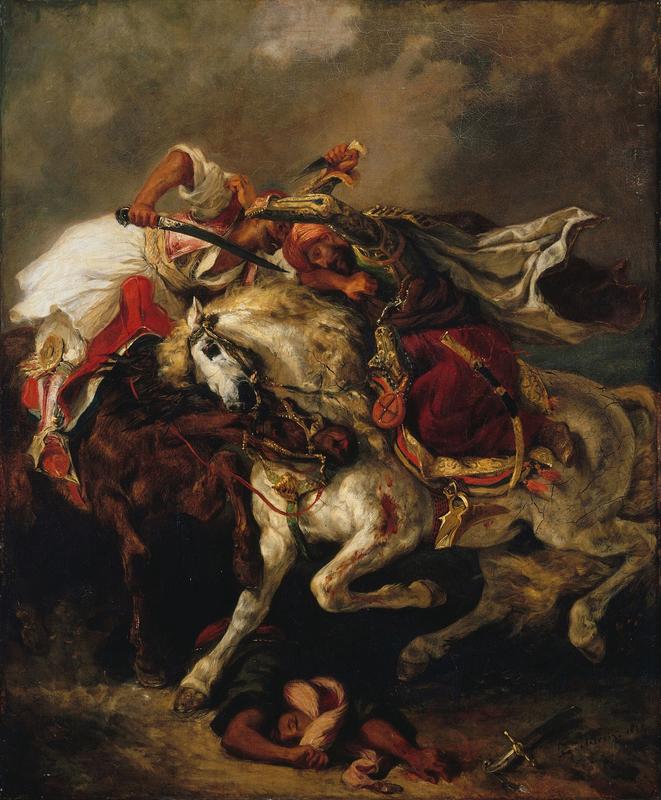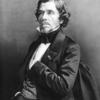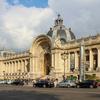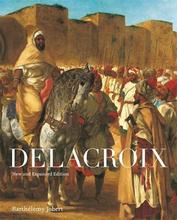More about Combat of the Giaour and the Pasha
- All
- Info
- Shop

Sr. Contributor
The Combat of Giaour and Pasha by Eugene Delacroix was inspired by Lord Byron’s poem, The Giaour, which was a part of a series of Orientalist poems written by Byron following his Grand Tour.
The Giaour succeeded Lord Byron's first two installments of his hit debut poem Childe Harold’s Pilgrammage, which detailed his illicit love for his half sister and a married woman. The Giaour was an experimental poem, subtitled “Fragments of a Turkish Tale,” and is, as the subtitle suggests, largely fragmented and Byron’s only fragmentary narrative poem. It was well-received and, although experimental, the ideas of the East in the poem follow the orientalist convention of a virtuous man “liberating” a women from the harem. It is a classic example of Romantic Orientalism with its illusion of the East as a place buried in the past. Delacroix had created previous paintings on this subject with the same style, including The Massacre at Chios.
The three narrators are Leila, the 'pasha' or Turkish military leader Hassan, and the giaour (a non-Muslim person). The plot mainly consists of Leila’s love triangle with Hassan and the giaour. She is a part of Hassan’s harem, but falls in love with the giaour and is drowned in the sea as a result. The giaour avenges the death of his lover by killing Hassan. This was partially inspired by Byron’s visit to Athens during the Grand Tour, where he discovered the Turkish custom of throwing adulterous women into the sea, wrapped in a sack. The title The Giaour comes from the derogatory term for an infidel or nonbeliever in Arabic.
Byron himself was not too fond of this poem (or really any of his poems that he wrote in his time in England from 1811-1816), but Delacroix ate it up. Byron’s poetry had a deep impact on Delacroix and had an aspirational effect. Delacroix wrote in his journals of his career crisis saying, “Why am I not a poet? But at least let me feel as much as possible in each of my paintings what I wish to produce in the souls of men.” Delacroix loved Byron’s poetry so much that it was a repeated subject in his later paintings, including Death of Sardanapalus.
Unlike other orientalist paintings of the period which sought to present themselves as accurate depictions of the East through illusionary realism, Delacroix choses to create a painterly representation intended for a reaction. Delacroix dabbled in poetry, but his most influential contribution to the field was his depictions of Byron’s work. In The Combat of Giaour and Pasha, he evokes the same emotions of the poem through its style and composition. His loose, expressive brushstrokes create dynamism as well as an atmospheric, otherworldly quality. This works in conjunction with the crowded composition which pushes the distorted bodies of the two fighting men and horses to the forefront of the picture plane to create the same feelings of chaos found in Byron’s poetry on the canvas.
This painting was made before his trip to North Africa, so its construction was entirely imagined. His interpretation was largely informed by Jacques Louis-David and Baron Gros’ accounts of Napoleon’s campaigns in Egypt, the Greco-Turkish War, as well as his friend and fellow painter who actually went to the Mediterranean, Jules-Robert Auguste, and his souvenirs of costumes and accessories that he often went to his studio to sketch.
Sources
- Bernard, Camille. “Some Aspects of Delacroix’s Orientalism.” The Bulletin of Cleveland Museum of Art, Vol. 58, No. 4 (April 1971): 123-127.
- Johnson, Lee. "The Delacroix Centenary in France - II." The Burlington Magazine 106, no. 735 (1964): 259-71. http://www.jstor.org/stable/874319.
- Knox-Shaw, Peter. “Persuasion, Bryon, and the Turkish Tale.” Oxford University Press, Vol. 44, No. 173 (Feb., 1993), pp. 47-69.
- Meisel, Martin. "Pictorial Engagements: Byron, Delacroix, Ford Madox Brown." Studies in Romanticism 27, no. 4 (1988): 579-603. doi:10.2307/25600747.
- Meyer, Eric. ""I Know Thee Not, I Loathe Thy Race": Romantic Orientalism in the Eye of the Other." ELH 58, no. 3 (1991): 657-99. doi:10.2307/2873460.
- Schmeising, Stacey. “Sardanapalus and Gender: Examining Gender in the Works of Byron and Delacroix.” University of Winsconsin-Milwaukee. May 2015.
- Watkins, Daniel P. "Social Relations in Byron's The Giaour." ELH52, no. 4 (1985): 873-92. doi:10.2307/3039470.












